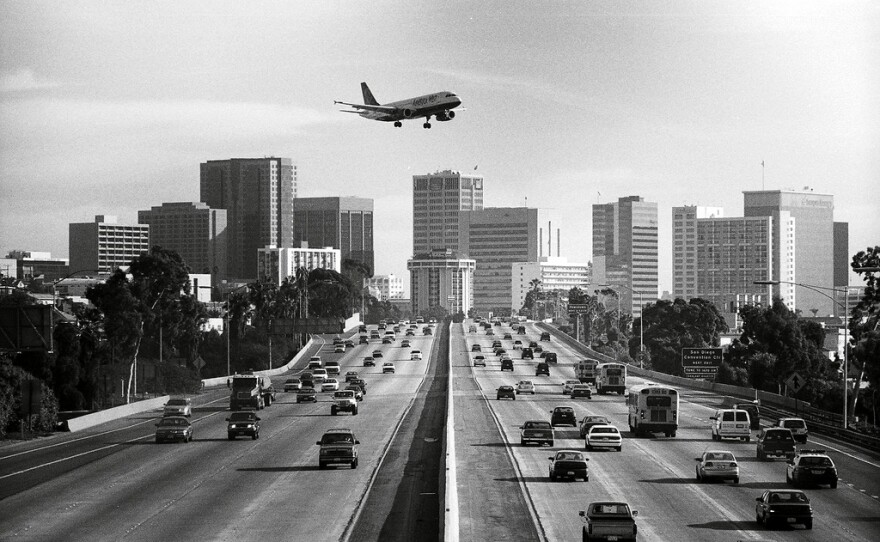It’s been four years since San Diego voters rejected the nutty idea of moving their international airport to Miramar Air Station and sharing it with the Marines. But that vote of no confidence meant San Diego would still be stuck with a one-runway airport called Lindbergh Field which may someday run out of landing space.
If Lindbergh Field is a problem, it’s one we haven’t been able to solve. But we keep trying… or at least we keep talking about it. And the latest conversation we’re having is called the Regional Aviation Strategic Plan (RASP). This past week planners with the San Diego Regional Airport Authority presented the preliminary findings of their plan.
The rough, raspy idea here is to take pressure off of Lindbergh Field by rerouting air traffic to smaller airports that already exist in San Diego county. So far, airport planners have identified three small airports they think can take significantly more traffic. They are McClellan-Palomar in Carlsbad, Gillespie Field in El Cajon and Brown Field near the Mexican border.
The multiple airport solution actually isn’t a bad idea. Richard Carson, a UCSD economics professor who has studied San Diego’s air travel predicament, says there are lots of cities that use more than one airport for commercial air traffic. When you fly to Washington D.C., for instance, you might fly into Dulles, or you might fly into Ronald Reagan/National, or you might fly into Baltimore/Washington Airport.
Carson says having more than one airport means you’re more likely to live close to a place where you can catch a flight. It also leads to cheaper flights because it encourages competition between airlines and between airports.
“At a city with multiple airports, two things happen,” said Carson. “You actually have more passengers, per capita. And you have lower prices.”
But the problem in San Diego is you’re not likely to see 737s land at Gillespie Field. Ted Anasis, manager of airport planning for the San Diego airport authority, says these small airports are too geographically constrained and their runways are too short. He says shifting regional air traffic to smaller airports will basically mean getting more private planes to land there, rather than at Lindbergh.
Anasis said commercial air traffic will generally stay at Lindbergh, although a planned runway extension at the Carlsbad airport could allow it to accept some commercial planes that fly a fair distance.
"Such as a regional jets,” he said, “that could serve destinations up to fifteen hundred miles from the San Diego region."
The wild card in this deck seems to be the Tijuana airport, which sits right on the U.S. border. The company that runs TJ International has gotten a U.S. government permit to operate a cross-border terminal on the U.S. side. If all goes according to plan, U.S. passengers who want to fly out of Tijuana will eventually drive to the border, park their cars, walk through the terminal’s border checkpoint and get on a plane.
That would take pressure off of Lindbergh Field and make it possible to fly to the Far East without having to switch planes in Los Angeles.
As local airport officials make their modest plans, the dreams of building a bigger, better international airport in San Diego haven’t gone away. Leon Campbell is part of a group he calls the "Airport Trust," which thinks we should build a three-runway airport in San Diego Bay. Yes, in the middle of the bay.
He says this would not be a floating airport. It would be anchored to the floor of the bay and it would accommodate up to 78 million passengers a year. Lindbergh, incidentally, only served 17 million last year.
Maybe it pays to think big.
But one thing to keep in mind (as regards the more modest plans) is that the San Diego Airport Authority can plan to boost air capacity at smaller airports but it has no authority to make it happen. That will be up to the cities and counties that run those airports… and it will be up to their voters.






